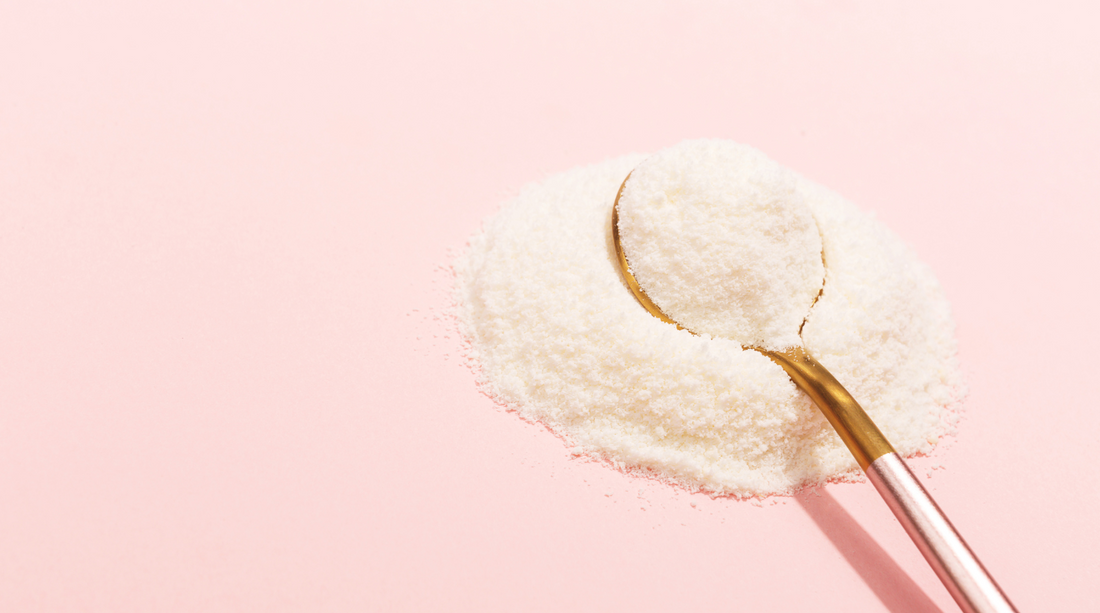Why So Many Women Don’t Respond to Inositol Alone, and What Can Help
TL;DR
- Inositol plays a key role in how our cells respond to insulin, a hormone that helps regulate blood sugar, and how our ovaries function.
- Research suggests that up to 38% of women with PCOS may experience “inositol resistance”, meaning that inositol from supplements may not be fully absorbed or utilized by the body.
- Supporting absorption through formulation strategies, such as combining myo-inositol with ingredients that may enhance bioavailability, is an active area of research.
- Research has explored supplementing with both forms of inositol—in the naturally occurring 40:1 ratio—to support normal inositol availability and cellular function.
- In one small study with healthy volunteers, combining myo-inositol with α-LA increased inositol levels in the blood by over 30% compared to taking myo-inositol alone.

Inositol’s Promise and Its Limits
If you’ve been exploring ways to support cycle regularity, metabolic balance, and healthy ovulation, chances are you’ve come across inositol. This naturally occurring compound plays a key role in how our cells respond to insulin, a hormone that helps regulate blood sugar, and how our ovaries function.
It’s especially popular among women with Polycystic Ovary Syndrome (PCOS), a complex hormonal condition that can impact ovulation, menstrual cycles, and metabolism. While inositol can be a helpful tool, some women may experience limited absorption or effectiveness, highlighting the importance of formulation and supporting ingredients.
Why Inositol Alone May Not Be Fully Effective
The “Ovarian Paradox”
One concept researchers study in PCOS is known as the “ovarian paradox.” It describes differences in how the body handles inositol, a compound involved in both insulin signaling and ovarian function.
In typical systems, insulin helps maintain a balance between two forms of inositol: myo-inositol (MI) and D-chiro-inositol (DCI). This balance supports normal cellular processes in the ovaries and other tissues.
In women with PCOS, this MI:DCI balance may differ. While tissues like muscle and liver may respond less effectively to insulin, ovarian tissue may remain more sensitive. This tissue-specific difference can influence the local MI:DCI ratio in the ovaries, which is part of ongoing research into how inositol functions in the body (1).
Why inositol alone might not be enough: the absorption issue
Research suggests that up to 38% of women with PCOS may experience “inositol resistance”, meaning that inositol from supplements may not be fully absorbed or utilized by the body. Absorption efficiency can vary between individuals, which may influence how the body processes inositol (2).
That’s why it’s so important to choose bioavailable forms of inositol, or ones that the body can actually absorb and put to use. Women deserve access to nutrients that truly work for their bodies, so they can feel more in control, supported, and empowered in managing their hormonal and reproductive health.
How the body processes inositol
MI, one of the most widely used forms of inositol, is mainly absorbed in the small intestine, where it travels into the bloodstream to do its work. To get there, MI relies on special transport proteins that act like little “carriers,” helping move it across the gut lining. These carriers(called SMIT-1 and SMIT-2) are pretty efficient, especially when you're taking normal, food-level amounts of inositol.
But here’s the catch: there’s a limit to how much can be absorbed at one time. These transporters can get maxed out, especially at higher supplement doses, meaning not all of the inositol you take will necessarily make it into your system. This process also depends on the right balance of sodium in your cells, which is controlled by an enzyme that helps maintain cellular energy and fluid balance.
In healthy individuals, most inositol from standard doses is absorbed, but absorption can vary depending on dose and individual physiology (3). Supporting absorption through formulation strategies, such as combining MI with ingredients that may enhance bioavailability, is an active area of research.
Factors limiting absorption
While inositol supplements can be a helpful tool for metabolic and overall hormone support, not everyone absorbs them the same way, and that can affect how well they work.
One key factor is absorption saturation. MI also has to share its absorption pathways with other substances like DCI, glucose, and common sweeteners like maltodextrin and sorbitol. These can compete for space and reduce how much MI actually gets into the bloodstream by as much as 19–32% in some cases (4).
On top of that, gut health and inflammation can influence how efficiently nutrients are absorbed. In some individuals, low-grade inflammation or imbalances in the gut lining may reduce absorption efficiency (5). Other factors, such as naturally high insulin or blood sugar levels, can further impact how nutrients like MI are processed and utilized by the body (6).
All of this helps explain why some women don’t respond to inositol alone—and why improving absorption is just as important as choosing the right form or dose.
Why more inositol isn’t always better - ratios matter
While inositol supplements,especially MI, have become popular for supporting hormonal health, newer research suggests that MI alone may not work the same way for everyone. In a healthy body, there’s a natural balance between two forms of inositol: MI and DCI. Typically, the body maintains a roughly 40:1 ratio, with MI being more dominant, thanks to a conversion process that mostly happens in the liver.
In some individuals, this balance may vary. Research has explored supplementing with both forms of inositol—in the naturally occurring 40:1 ratio—to support normal inositol availability and cellular function. This approach is being studied to help ensure that inositol can be efficiently absorbed and used by the body (7, 8).
The Game-Changer: Alpha-Lactalbumin
What it is and how it helps
If you’ve tried MI alone and didn’t see the results you hoped for, you’re not alone. Some women’s bodies simply don’t absorb it well enough to benefit fully. That’s where alpha-lactalbumin (α-LA) may help.
Several studies have shown that α-LA can boost how well inositol is absorbed in the gut, making it more available to the body. In one small study with healthy volunteers, combining MI with α-LA increased inositol levels in the blood by over 30% compared to taking MI alone, an impressive improvement in absorption (6).
So how does α‑LA actually help your body absorb MI better? It works in a few smart ways. First, during digestion, it releases small proteins (called peptides) that gently open the spaces between cells in the gut lining. This gives inositol a better chance of slipping through and getting absorbed. Second, because α‑LA is a calcium-binding protein, it may help “escort” inositol across the intestinal wall more efficiently—almost like a delivery assistant (9).
It also supports gut health in a broader way. Alpha-lactalbumin has prebiotic properties, supporting a healthier gut environment. By improving the environment in the gut and helping inositol get where it needs to go, α‑LA can make inositol supplements more effective, especially for women who haven’t seen results from MI alone.
In short, for women who don’t respond to MI alone, combining it with alpha-lactalbumin may be the key to unlocking its full potential.
A More Complete Approach to Hormonal and Metabolic Health
While inositol is a powerful tool for improving insulin sensitivity and supporting ovulation, it’s becoming clear that it may not be enough on its own—especially for women dealing with more complex PCOS symptoms.
Using a clinically supported 40:1 ratio of MI:DCI helps mimic the body’s natural balance, but absorption still matters. That’s where alpha-lactalbumin makes a big difference, helping the body absorb inositol more effectively while also supporting gut health—an area often overlooked in metabolic and overall hormone health. .
Together, this combination takes a more complete, root-cause approach to managing PCOS—supporting not just cycles and fertility, but also long-term metabolic and hormonal health.




